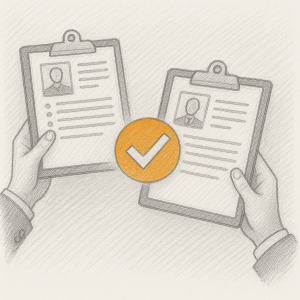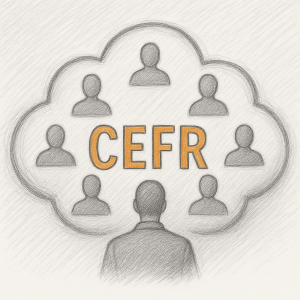The pursuit of specialized skills, diverse perspectives, and around-the-clock innovation has made global talent acquisition a strategic necessity. But venturing into the international talent pool requires more than just a global mindset; it demands a sophisticated approach to sourcing, engaging, and, most critically, assessing candidates from diverse linguistic backgrounds.
Successfully hiring from across the world hinges on one fundamental question: How can you be certain a candidate possesses the language proficiency required not just to communicate, but to truly excel in their role? Getting this right is the key to unlocking global potential and avoiding costly hiring mistakes.
Why it matters now?
With hybrid work, global digital transformation, and growing reliance on cross-border teams, multilingual hiring is no longer optional. It’s a defining factor in scaling operations, serving diverse markets, and maintaining competitive advantage in 2025 and beyond.
A refined global hiring strategy must address not only cultural fit and job expertise, but also communication fluency and linguistic capability, especially in roles requiring collaboration across borders.
Strategic sourcing in a multilingual world
Finding top international talent means casting a wider, more intelligent net. Simply posting a job in English on a single global platform is no longer sufficient.
- Go beyond the usual suspects: while LinkedIn is a powerful tool, it’s not the only one. Effective sourcing involves using region-specific professional networks (like Xing in Germany), specialized international job boards, and engaging with global talent communities in fields like tech, finance, and design.
- Craft a multilingual message: to attract the best local talent, speak their language. Consider posting key roles in both English and the local language. This demonstrates cultural respect and ensures you reach candidates who may not be actively searching on English-only platforms – or who use search tools in their native language. Your employer value proposition must be translated not just in words, but in cultural context.
- Leverage your internal global network: your existing employees are one of your best sourcing tools. Encourage referrals from your international team members, who can tap into their local networks and act as powerful brand ambassadors.
The assessment challenge – the Achilles’ heel of global recruitment
You’ve sourced a promising candidate from another country whose CV states they are “fluent” in the required language. What does that actually mean? This is where many global recruitment strategies falter.
The reality is that self-reported language proficiency is subjective and unreliable. A candidate’s “conversational fluency” might be excellent for social situations but wholly inadequate for the demands of a professional environment. The crucial distinction lies between social communication and professional linguistic competence.
Best practices for fair and effective language assessment
To move from guesswork to certainty, a structured and objective assessment process is non-negotiable.
- Standardize your framework: use an internationally recognized standard like the Common European Framework of Reference for Languages (CEFR). This framework (ranging from A1 for beginners to C1 or C2 for mastery) provides a consistent and objective measure to fairly compare candidates from different countries and educational systems. It creates a common language for your entire recruitment team.
- Integrate assessment early: don’t wait until the final interview to discover a critical language gap. Use professional screening tools early in the process to ensure you are only investing time in candidates who meet the fundamental communication requirements of the role.
- Use objective, third-party audits: removing bias is essential for fair and effective assessment. Internal evaluations by hiring managers or recruiters can be subjective and inconsistent. Engaging a professional, third-party assessment service ensures every candidate is measured against the same objective standard, providing reliable and defensible data.
- Contextualize the required level: language needs are not one-size-fits-all. A software developer who primarily communicates via code and technical documentation may need a B2 (Upper Intermediate) level, while a sales director leading international negotiations will require a C1 (Advanced) level. Define the required CEFR level for each role before you begin your search.
- Ensure a positive candidate experience: a professional language audit should feel like a relevant and respectful part of the process, not an intimidating academic exam. When done correctly, it signals to the candidate that your company is serious about setting its employees up for success.
From sourcing to success
In the competitive arena of global talent acquisition, “hope” is not a strategy. Success is born from a deliberate process that combines intelligent sourcing with precise, objective assessment. While finding great international candidates is the first step, it is the rigour of your language validation process that will ultimately determine the quality of your hire, the success of your international teams, and your company’s ability to thrive on a global stage.
Top mistakes in global hiring to avoid:
- Assuming self-reported fluency is accurate
- Delaying language testing until late in the process
- Using non-standardized assessment methods
- Requiring unnecessarily high language levels
- Ignoring candidate experience during testing
What great global talent assessment looks like:
- Early-stage, standardized screening
- Objective, third-party verification
- Role-specific language benchmarking
- Respectful and transparent candidate experience
Don’t risk global hiring misfires!
Don’t leave your most critical international hires to chance. Focus Audit Tool helps you identify exactly the language level required for each role—and ensures your new hire meets it with confidence. Built on the CEFR framework, our assessments give you precision, speed, and peace of mind.






